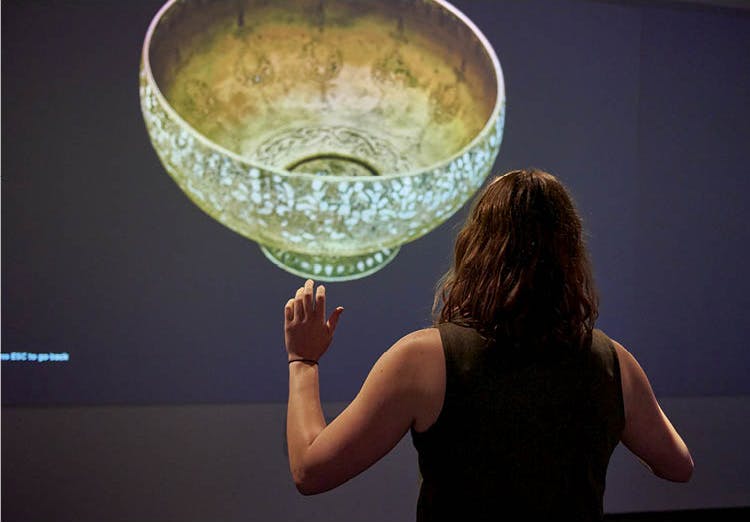
- Magazine Article
- Digital Innovation
- Education
- Exhibitions
What Can Art Be?
A new rotation of the ArtLens Exhibition is enriching the museum experience and encouraging exploration like never before

Is it possible to take Art History 101 through gameplay? ArtLens Exhibition aims to provide non-traditional visitors—including first-time and repeat visitors—with a tool kit to understand how to look at art using the concepts of composition, symbols, purpose and gesture, and emotion. In June, ArtLens Exhibition reopened with a new display of 21 artworks from across the collection—from medieval to decorative arts to contemporary. This interactive gallery will continue to rotate every 18 to 24 months.
After the original iteration, Gallery One, opened in 2012, visitor feedback revealed that, although the interactives were successful, the themes and the placement of artworks in front of touchscreens were confusing to visitors. Redesigned with a focus on digital approaches to understanding the museum, the renamed ArtLens Exhibition opened in September 2017 with 16 new interactives that intertwine innovative gesture-sensing, eye-tracking, and facial recognition with a selection of CMA masterworks.
Selecting artworks for the gallery is a collaborative process. The Digital Innovation Team, composed of representatives from different departments including digital, technology, interpretation, and design, worked with curators of each collection to generate a list of more than 100 possibilities. A smaller cross-department team refined the list, prioritizing objects that would be accessible to a broad audience but that also would inspire regular visitors to think about familiar objects in new ways. Our focus on expertise and collaboration has resulted in a most successful and engaging installation.
New to This Installation Explore 3-D–projected models of objects to uncover exciting new details.

As an inherently iterative space, ArtLens Exhibition seeks to push the boundaries of innovation by providing visitors with the tools to look more closely at art. A recent National Endowment for the Arts study completed by the CMA’s research and evaluation department in partnership with Rockman et al found that “people who visited the ARTLENS Gallery demonstrated greater gains in their level of art understanding and knowledge.”
We discovered that visitors wanted to explore all angles and perspectives of an artwork. Based on this feedback, the reinstallation incorporates zoomable 3-D–projected models. Visitors can explore artworks in the CMA’s collection like never before—digitally turning them around to see the tops, bottoms, and insides. In addition, all 3-D objects are scannable with the ArtLens App, providing another way to access additional content.
Iterative Design
Striking a balance between encouraging interaction with the games and close looking of the objects proved to be a fundamental design challenge: How do you shift focus from a digital game to a physical object and back again? In Gallery One, this was achieved by using a monitor in front of an artwork that displayed its interactive image. However, this had the unfortunate effect of putting the digital interactive between the visitor and the artwork.
That idea has been turned on its head. We established sightlines where visitors would encounter an artwork and its digital counterpart at the same time. Some physical but not visual separation is necessary between the games and the artworks—but not too much, to maintain the ability to look between the digital projection and the actual artwork.
Artwork Selection Process
One unique aspect of ArtLens Exhibition is that it provides an opportunity to look at and consider connections across time and place. Each installation can create a dialogue among the artworks and the digital interactives.

Articulating a theme, or a framework that would shape the way we interpreted and presented the objects, was important for this endeavor. The broad question “What can art be?” provided us with multiple entry points into thinking about and engaging with such a diverse group of objects, each of which had to correspond to two games in different themes, allowing visitors to dive deeper into understanding the object. In the end we selected artworks that encourage slowing down and discovering the unexpected while having fun connecting with art. There is more than one way to understand a work of art, so we encourage visitors to consider their own reactions and ideas.
Cleveland Art, July/August 2019